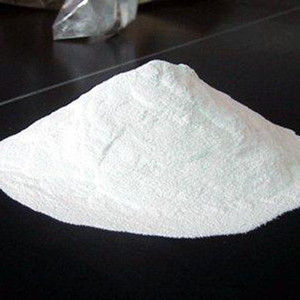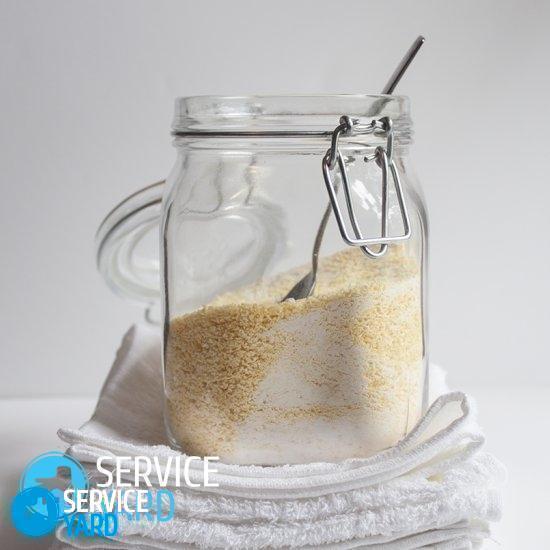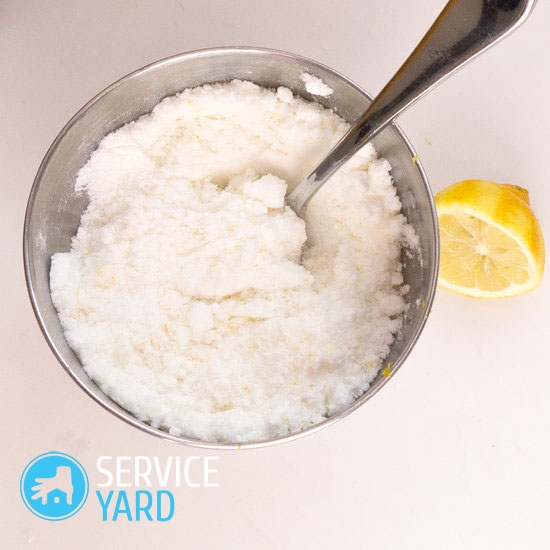Soda ash - manufacturers

Soda ash refers to the so-called mature products, that is, products that have long been on the market. Sources of sodium carbonate from ancient times to the beginning of the 19th century were the soda lakes of Egypt, as well as some other countries and alkali-containing plants growing along the shores of the Mediterranean Sea and the Atlantic Ocean. Soda ash, producer of products, as well as properties and applications - these are the issues that we will consider in this article.
to contents ↑Soda Ash: General Information
Technical sodium carbonate is a powder or granules of white color. In the anhydrous state, soda ash is a colorless crystalline powder and has the chemical compound Na2CO3 (sodium salt of carbonic acid).
 International name for sodium carbonate: Sodium carbonate. This is the name that can be found in many manufacturers of soda ash on the packaging.
International name for sodium carbonate: Sodium carbonate. This is the name that can be found in many manufacturers of soda ash on the packaging.
Important! The name “soda” comes from the plant Salsona Soda. Soda was extracted from the ash of this plant. And it was called calcined because to obtain it, it was necessary to calcify the ash, that is, heat it to a high temperature.
In nature, soda ash is found in large quantities in salt formations, in the form of underground soil brines and brine in salt lakes, as well as in the form of minerals.
to contents ↑Important! More than 60 such deposits are known on Earth. The largest are in the USA, Canada, Mexico, Kenya, South Africa. Soda lakes are also found in Transbaikalia, as well as in Western Siberia. In the United States, natural soda provides 40% of a country's need for a given mineral. In the CIS due to the lack of large deposits, soda ash is not extracted from minerals. Nevertheless, manufacturers of soda ash find ways to solve the problem and deliver the product to the market, focusing on the needs of consumers volume.
Soda ash manufacturers
The problem of obtaining artificial sodium carbonate was first solved by the French pharmacist M. Leblanc. The scientist suggested getting soda by calcining a mixture of sodium sulfate. From the obtained alloy, soda ash was leached with water, and the solution was evaporated to isolate sodium carbonate in solid form.
Important! LeBlanc's method played a crucial role in the development of the chemical industry. However, the LeBlanc method had significant drawbacks and huge waste. Soda residue (calcium sulfite) sometimes reached up to one and a half tons for each ton of soda ash. Therefore, more rational methods for the production of sodium carbonate were soon created.
In 1838, the British scientists Harrison and Hamming filed a patent for the production of sodium carbonate by the ammonia method, but on an industrial scale, a simple laboratory method was fraught with great difficulties.
Methods and Technologies
Currently, the industrial production of soda ash is carried out in four ways:
- Ammonia (from sodium chloride).
- Natural.
- From nifilins - on the basis of complex processing of nifilin raw materials.
- Carbonization of sodium hydroxide.
Depending on the scale and technologically affordable solutions, each producer of soda ash selects the most optimal method of manufacturing this product.
Important! The main role in production is still played by the ammonia method. Its specific gravity, which had recently been 100%, began to gradually decline. The advantages of the ammonia method include:
- Relative cheapness.
- Process Stability.
- Low temperature (up to 100 C), necessary for the implementation of the main reactions of the process.
- High quality of the product.
- Low cost of sodium carbonate.
- Widespread.
- Availability of extraction of necessary raw materials.
Soda Ash Plants
The first world factories that applied the ammonia method were the Belgian Kouye plant (built in 1865 according to the design of Solve himself) and the Kamsko-Soda Plant Likhachev (Russia).
The Russian plant began its work in 1868 and was created by Colonel Ivan Likhachev on the territory of his estate of the Kazan province on the banks of the Kama River. It did not last long and after 4 years it was closed due to unprofitability.
The production of products from natural raw materials is a relatively new industry, and it arose in the late 1940s. Today, production from natural raw materials is becoming the main competitor of the ammonia method due to high environmental purity and economic profitability.
The integrated processing of nifilins into soda ash, potash, alumina and cement has become the third most important method for producing sodium carbonate. This method was developed in the USSR and is used only in Russia. This method saves up to 15% of investment.
Important! The production method of soda ash based on the integrated processing of nifilin raw materials has several advantages:
- No waste.
- Cost-effectiveness of the process.
- Complex processing of raw materials.
- Obtaining, in addition to soda products, cement and alumina.
 Carbonization of sodium hydroxide, as an industrial method of production, was developed in the late 1960s and early 1970s. The demand for soda ash was quite high, and there was an abundance of caustic soda. To date, this method of producing soda ash has lost practical importance.
Carbonization of sodium hydroxide, as an industrial method of production, was developed in the late 1960s and early 1970s. The demand for soda ash was quite high, and there was an abundance of caustic soda. To date, this method of producing soda ash has lost practical importance.
Currently, there are more than 75 soda enterprises located in 34 countries. Across the continents, soda production is distributed rather unevenly:
- In Europe, 55% of soda ash is produced.
- In North America - 29%.
- In South America - 1%.
- In Asia, 13%.
- In Australia - 1%.
- In Africa - 1%.
The leading producers of soda ash are:
- “AI-Si-Ay” (England).
- Solway (Belgium).
- “Elide” (USA).
- “FMK” (USA).
Domestic manufacturers of soda ash:
- OJSC Bereznikovsky Soda Plant (Bereznyaki), Perm Territory.
- OJSC Soda Sterlitamak, Republic of Bashkortostan.
Applications for soda ash
Soda ash has not only a long history of production, but also use. It is difficult to name at least one branch of modern industry where this product is not used. The largest consumers are chemical, metallurgical and other industries.
Consider the main uses of sodium carbonate:
- Food industry. Soda is used as a regulator of acidity.
- Leather industry. Sodium powder is used in the leather and shoe industries in the production of furs for alkaline processing of materials.
- Pulp and paper industry. Soda is used in the sizing of paper, cardboard, as well as in the production of parchment, tanning agents, and mainly in sulphite pulping.
- Glass production. Sodium carbonate grades “A” and “B” are used in the manufacture of:
- Crystal.
- Glass blocks.
- Foam glass.
- Optical and medical glass.
- Ceramic tiles.
- Chemical industry. Sodium carbonate in the chemical industry is used to obtain:
- Caustic soda.
- Sodium bicarbonate.
- Synthetic detergents (laundry soap, toilet).
- Compounds of chromium, sulfites, phosphates, fluorides, sodium nitrite and sodium nitrate.
- Paints and varnishes.
- Non-ferrous metallurgy. Here soda ash is used in the production of alumina, in the processing of lead-zinc, cobalt-nickel and tungsten-molybdenum ores.
- Petrochemical and oil refining industries. Soda ash is used in the production of synthetic fatty acids, as well as in the processing of oil. Sodium carbonate is used, along with other components, when driving oil wells to strengthen the walls of the wells, thereby preventing collapses.
- Ferrous metallurgy. Sodium carbonate is used to remove sulfur and phosphorus from cast iron, as well as to extract chemical products from resins formed during coke production.
- Engineering. Here, sodium carbonate is necessary for the neutralization of machine parts and tools. Use soda ash and to improve the technology of foundry.
- In the medical industry. Sodium carbonate is used in the manufacture of medicines.
- In the electronic industry, soda ash is used to make vacuum glass.
- In light industry. Soda ash is used for washing, bleaching, dyeing fabrics, as well as producing artificial silk and nitrocellulose.
Sodium carbonate is often used for domestic purposes. For example:
- The product is used as a detergent.
- Soda perfectly removes fat.
- It can soften water when washing and boiling fabrics.
- Used for washing porcelain, earthenware and enameled dishes.
- It is part of many washing powders.
- It is used to purify water that feeds steam boilers.
- Used as a descaler.
Stock footage
We hope that the information received will allow you to evaluate the merits and indispensable qualities of such a product as soda ash, and you will find it worthy of application.
- How to choose a vacuum cleaner taking into account the characteristics of the house and coatings?
- What to look for when choosing a water delivery
- How to quickly create comfort at home - tips for housewives
- How to choose the perfect TV - useful tips
- What to look for when choosing blinds
- What should be running shoes?
- What useful things can you buy in a hardware store
- Iphone 11 pro max review
- Than iPhone is better than Android smartphones



